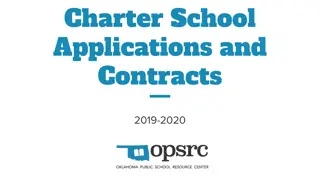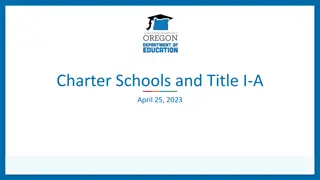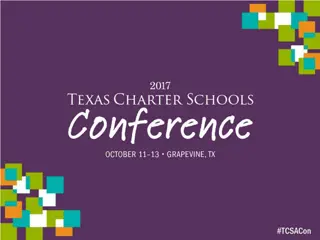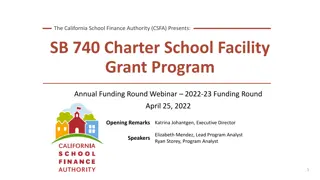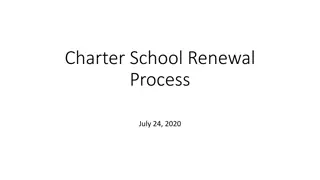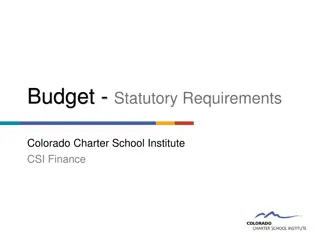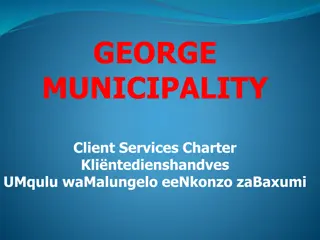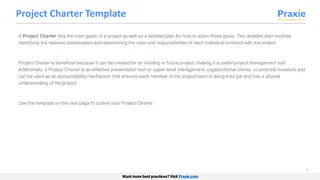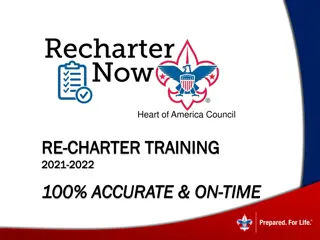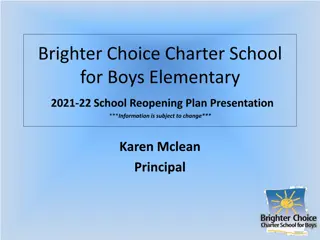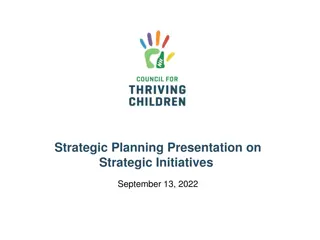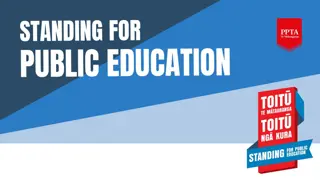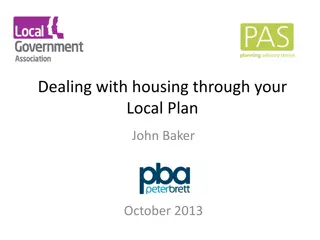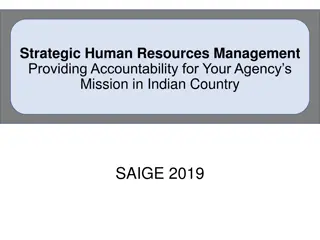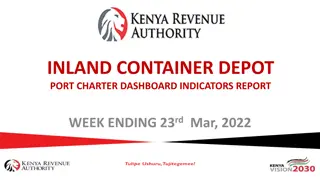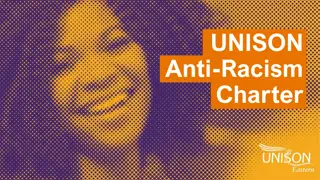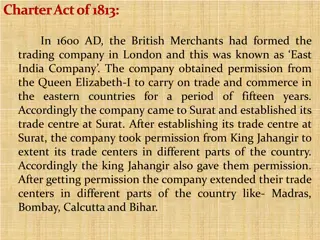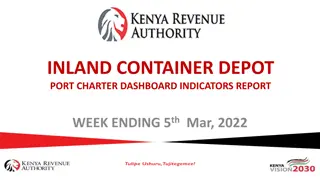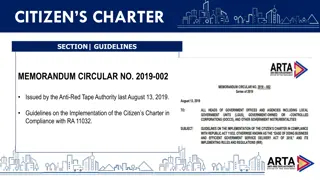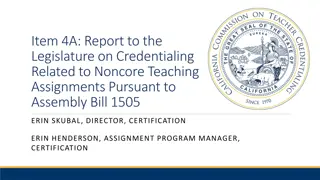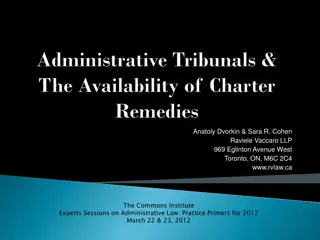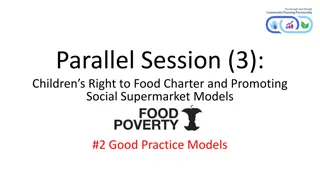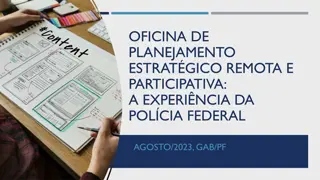Enhancing Charter School Quality Through Strategic Planning
Emphasizing high-quality education, the strategic plan update focuses on academic performance and school ratings. Nevada's criteria for charter schools reflect a commitment to excellence and accountability, while the plan outlines goals to maintain standards, reward success, and address underperforming schools. Academic indicators and seat statistics highlight progress in creating a robust educational environment.
Download Presentation

Please find below an Image/Link to download the presentation.
The content on the website is provided AS IS for your information and personal use only. It may not be sold, licensed, or shared on other websites without obtaining consent from the author. Download presentation by click this link. If you encounter any issues during the download, it is possible that the publisher has removed the file from their server.
E N D
Presentation Transcript
Strategic Plan Update 2016-17 NSPF Update An Unwavering Commitment to High Quality Seats
Federal CSP Criteria: Academics (c) Past Performance. (NFP) The Secretary considers the past performance of charter schools in a State that enacted a charter school law for the first time five or more years before submission of its application. In determining the past performance of charter schools in such a State, the Secretary considers the following factors: (1) The extent to which there has been a demonstrated increase, for each of the past five years, in the number and percentage of high- quality charter schools in the State; and (2) The extent to which there has been a demonstrated reduction, for each of the past five years, in the number and percentage of academically poor-performing charter schools in the State.
Nevadas Definition In developing its CSP grant and the ESSA plan, the NDE determined that charter schools which: Are rated at the 4 & 5 Star Level (or equivalent alternative framework rating); and Have no significant compliance issues in the areas of student safety, financial management, and equitable treatment of students Are High Quality Charter Schools In developing its CSP grant and the ESSA plan, the NDE determined that charter schools which: Are in the Bottom 5% of public schools in the state; Have a graduation rate below 67%; or Are rated at the 1 or 2 Star Level Are academically poor-performing charter schools
Our Strategic Plan: Academic Principles Maintain Unwavering Commitment to High Quality Schools 4 & 5 Star Schools Approve only the highest quality applicants Reward High Quality Schools and Disseminate Best Practices Sanction low performing schools Align standards to assessments (ACT Aspire) Third party comprehensive assessment of the quality of the sector (CREDO)
Our Strategic Plan: Academic Indicators Number and Percentage of seats at 4 or 5 star levels or equivalent Number and Percentage of new schools rated 4 or 5 star in 1strating year Number and Percentage of academically low-performing schools closed each year
Indicator: High Quality SPCSA Seats Out of 25,083 Elementary and Middle School Students Enrolled in SPCSA schools in 16-17, 13,712 were in 4 and 5 Star Schools, up from 3002 out of 10,117 in 11-12. 1 & 2 Star enrollment has declined from 6,858 to 3,842 since 12-13. Number of Elementary and Middle School Students Served at Each Star Rating--SPCSA Charters 8,995 5 star 4 star 3 star 4,717 390 6,158 2 star 3,671 1 star 2,631 1,562 2,660 371 7,529 1,354 3,456 6,046 3,952 1,891 4,583 1,809 1,951 812 97 2011-2012 2012-2013 2013-2014 2016-2017
Indicator: High Quality SPCSA Seats Percentage of Elementary and Middle School Students Served at Each Star Rating--SPCSA Charters The percentage of 4 and 5 Star seats has steadily increased from 29.7 in 11-12 to 54.7 percent in 54.7 percent in 16-17, while the percentage of 1 and 2 star seats has plummeted from 56.9 percent to 15.3 percent during the same period. 3% 26% 36% 39% 27% 4% 13% 5 Star 20% 10% 4 Star 19% 3 Star 2 Star 22% 39% 1 Star 30% 45% 29% 8% 18% 8% 6% 1% 2011-12 2012-13 2013-14 2016-17
Indicator: High Quality District Charter Seats Out of 6,090 Elementary and Middle district charter students in 16-17, 1,202 were in 4 & 5 Star Schools, up from 706 of 4,299 in 11-12. 1 & 2 Star seats grew from 2,366 to 2,984 since 11-12, but over 1,100 students moved up from the 1 Star level from 13-14 to now. Number of Elementary and Middle School Students Served at Each Star Rating--District Charters 396 806 287 276 453 5 star 869 706 4 star 1904 0 3 star 1,554 1629 1187 2 star 1 star 1,258 895 2,833 1,738 1,276 1,139 628 151 2016-2017 2011-2012 2012-2013 2013-2014
Indicator: High Quality District Charter Seats There has been far less quality seat growth for district charters, with the percentage of 4 & 5 Star Seats varying between 15.6 and 23.3 percent and up just 3 points between 11-12 and 16-17. There has been a slight decline in the proportion of 1 & 2 Star Seats, but the percentage of 1 Stars dropped dramatically after increasing for two years. Percentage of Elementary and Middle School Students Served at Each Star Rating--District Charters 6% 7% 17% 10% 13% 18% 0% 6% 28% 33% 31% 5 Star 33% 4 Star 3 Star 2 Star 27% 1 Star 41% 18% 47% 26% 24% 15% 2% 2011-12 2012-13 2013-14 2016-17
Indicator: All Nevada Charter School Seats Statewide, 14,914 16- 17 Elementary and Middle charter students out of 31,173 such students - were in 4 & 5 Star Schools, up from 3,708 of 14,376 in 11-12. 1 & 2 Star seats have shrunk each rating year since 12-13. 2,000 students still languish in 1 Star charters. Number of Elementary and Middle School Students Served at Each Star Rating--All Charters 9,391 5 star 843 4 star 5,523 6,445 3 star 3,947 2 star 3,337 2,431 1 star 9,433 4,214 371 2,541 5,085 7,304 5,690 4,724 5,478 2,437 2,102 1,951 1,373 2011-2012 2012-2013 2013-2014 2016-2017
Indicator: All Nevada Charter School Seats Statewide, the percentage of 4 & 5 Star Seats has increased during each rating period, growing from 25.8 percent to 47.8 percent. between 15.6 and 23.3 percent between 11-12 and 16- 17. The percentages of students in 1 Star and 2 Star schools has been more than halved in the same period. Percentage of Elementary and Middle School Students Served at Each Star Rating--All Nevada Charters 5% 23% 30% 31% 22% 3% 18% 12% 23% 5 Star 18% 4 Star 3 Star 24% 2 Star 30% 40% 1 Star 40% 26% 15% 17% 11% 7% 7% 2011-12 2012-13 2013-14 2016-17
Indicator: Performance Out of the Gate 2012-13 2013-14 2016-17 2012-13 2013-14 2016-17 0% 67% 17% 0% 50% 33% 33% 0% 0% 0% 5 Stars 4 Stars 3 Stars 2 Stars 1 Star 0 1 3 2 0 2 0 1 0 0 3 1 3 3 0 5 Stars 4 Stars 3 Stars 2 Stars 1 Star 30% 10% 30% 30% 0% The percentage of schools receiving a first rating of 4 or 5 Stars has fluctuated between a low of 17 percent in 12-13 to a high of 67 percent in 13-14. The percentage of 3 Star initial ratings has dropped consistently, from 50 percent to 30 percent. The percentage of schools rated at the 2 Star level has declined overall; no school has received an initial 1 Star rating.


